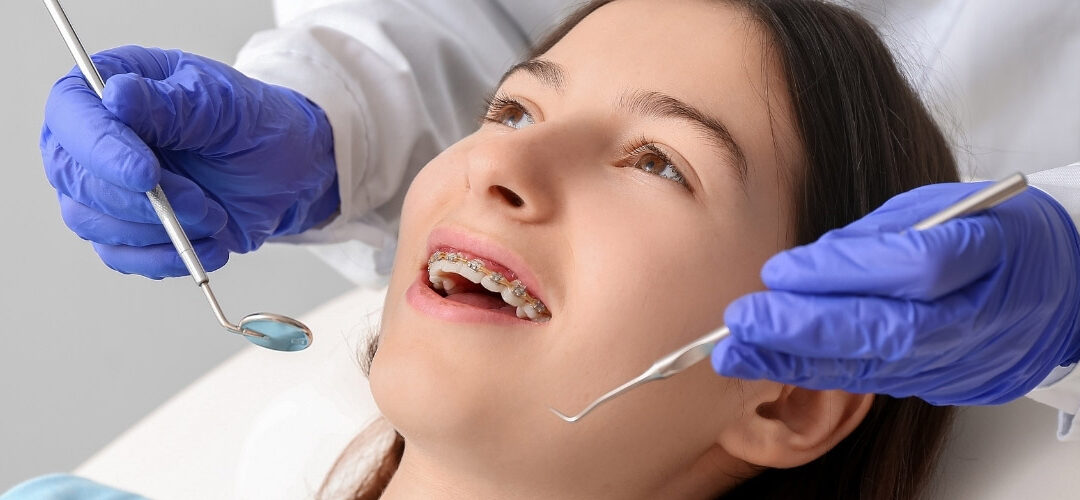Comprehensive Guide to Orthodontics Treatments for Fixing Oral Misalignments
In the realm of orthodontics, the journey to attaining a perfectly straightened smile includes a myriad of treatments tailored to deal with dental imbalances. From traditional braces to unnoticeable aligners and also surgical alternatives, the area of orthodontics supplies a variety of remedies to deal with varying degrees of dental irregularities. Comprehending the details of each procedure, including their mechanisms, benefits, and potential disadvantages, is vital in making educated choices regarding one's orthodontic therapy. As we browse with the thorough overview to orthodontic treatments for dealing with oral imbalances, the complex information of each approach will certainly unravel, dropping light on the course towards a unified and useful oral alignment.
Orthodontic Procedures Overview

Routine modifications and surveillance are essential parts of orthodontic therapy to make certain progress is on track and to make any type of required adjustments along the way. By undergoing orthodontic procedures, patients can not just attain a straighter grin but likewise boost their general oral health and function.
Traditional Braces: How They Work
When thinking about orthodontic treatments for oral imbalances, standard braces stand out as a tried and true approach for correcting teeth placing. Typical dental braces are composed of braces, cables, and bands that work together to use continual pressure on the teeth, gradually relocating them right into the desired positioning.
One secret aspect of just how conventional braces work is the process of bone remodeling. As stress is put on the teeth through the braces, the bone bordering the teeth is reshaped to support the brand-new tooth settings. This remodeling is important for the long-lasting stability of the fixed alignment. Clients will need routine adjustments at the orthodontist's workplace to make sure the dental braces remain to apply the proper pressure for effective teeth movement.
Invisible Aligners: Cons and pros
Undetectable aligners provide a very discreet and hassle-free choice to traditional dental braces for dealing with dental misalignments. These clear, personalized trays are essentially unnoticeable when used, making them an appealing alternative for individuals looking for a more aesthetically pleasing orthodontic therapy. Among the main advantages of unnoticeable aligners is their removability, enabling for easier upkeep of oral health contrasted to standard dental braces. Clients can eliminate the aligners prior to eating or brushing their teeth, reducing the danger of food obtaining stuck in the appliance and streamlining the click this link cleaning process.

Surgical Orthodontic Options
Surgical interventions in orthodontics present practical options for attending to complex oral imbalances that might not be successfully settled through standard orthodontic treatments. While typical braces and invisible aligners can remedy several orthodontic problems, particular cases call for surgical intervention to accomplish optimal results. Surgical orthodontic choices are generally recommended for extreme malocclusions, substantial jaw disparities, and situations where the underlying bone framework needs modification to accomplish proper placement.
One typical medical orthodontic procedure is orthognathic surgery, which includes rearranging the jaws to remedy useful concerns such as trouble eating or speaking. This surgery is frequently carried out in cooperation with an orthodontist that helps align the teeth before and after the treatment. Surgical orthodontics might likewise include treatments to reveal affected teeth, get rid of excess gum cells, or reshape the jawbone to develop a more harmonious facial profile.
Before thinking about surgical orthodontic options, patients undertake a comprehensive examination to determine the necessity and prospective advantages of such treatments. cumming aligners. While surgical procedure might appear challenging, it can substantially enhance both the function and appearances of the smile in cases where standard orthodontic treatments fall short
Retainers and Post-Treatment Treatment

Post-treatment treatment includes adhering to the orthodontist's guidelines faithfully. This might include proper dental hygiene practices, attending follow-up consultations, and putting on the retainers as suggested. Failing to abide with post-treatment treatment instructions can cause relapse, where the teeth gradually move back towards their original placements. Consistent retainer wear, great oral hygiene, and normal oral exams are crucial for preserving the outcomes accomplished via orthodontic surgical procedure and guaranteeing the long-term stability of the fixed oral alignment.
Conclusion
In final thought, orthodontic treatments supply numerous alternatives for remedying dental misalignments. Surgical orthodontic alternatives are offered for much more serious imbalances. Generally, orthodontic procedures can effectively enhance dental wellness and visual look.
As we navigate with the thorough guide to orthodontic treatments for correcting oral misalignments, the intricate details of each technique will unfold, losing light on the course toward a useful and unified oral alignment. - cumming braces
One of the most usual orthodontic treatments is the use of braces, which consist of metal brackets and wires that use mild pressure to more helpful hints gradually shift teeth right into the desired setting.When thinking about orthodontic treatments for dental imbalances, conventional dental braces stand out as a reliable technique for remedying teeth positioning. Furthermore, unseen aligners may not be suitable for complex orthodontic issues that need more significant teeth activity, as they are commonly recommended for light to modest instances. Retainers are personalized orthodontic tools designed to hold teeth in their dealt with settings after the completion of orthodontic therapy.